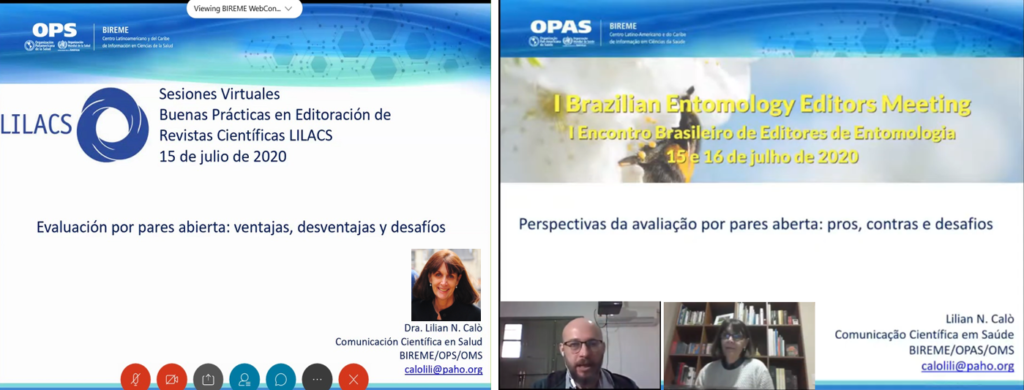As of 2010, the scientific community led what is probably the biggest paradigm shift in the way research is planned, carried out, evaluated, communicated and shared. Not only, the fundamental role of science in the development and technological progress associated with health and quality of life has been increasingly highlighted. The slogan of the European Community Scientific Community Research Program – Horizon 2020 translates and summarizes this concept – “For a better science for the world and not just for a better science in the world.”
Open science can be defined as a comprehensive concept that encompasses several movements that seek to open up the entire research cycle and was motivated by the need to share resources between disciplines and increase transparency in all its stages.
Open editorial practices, however, have been adopted with caution by journal editors in Brazil and Latin America. One of the biggest challenges lies in the task of demonstrating to the scientific community the advantages of operating with a transparent system for generating, evaluating, sharing and using knowledge. Adopting new paradigms, however, requires a willingness to accept changes, financial and human resources to implement them, as well as time and energy to deal with new processes, methodologies and technologies. Thus, convincing the scientific community of the need to adopt open science practices consists not only of pointing out the ethical, social and academic benefits, but mainly showing that this practice will indeed help them to be successful in their work and strengthen your collaboration networks.
There are countless practices that integrate open science, and that are described in the Open Science Taxonomy[1], however, we can say that there are three main pillars that support it: open access, open data and open peer review. Of these, open peer review (OPR) is a topic that often raises doubts and questions on the part of editors and researchers.
BIREME’s Scientific Communication Coordinator, Lilian Calò, participated in two virtual scientific communication events recently, where she presented the theme OPR. The first, in the series of Good Practices in Editorial Processes for Scientific Journals webinars, for the LILACS network in Latin America and the Caribbean, and second, in the I Brazilian Entomology Editors Meeting.
 The presentation to the LILACS Network was made in the Spanish language, since most of the participants, formed by scientific editors, researchers and librarians, belong to the countries of Latin America and the Spanish Caribbean. The event had more than 160 connected people, who interacted asking several questions at the end of the conference.
The presentation to the LILACS Network was made in the Spanish language, since most of the participants, formed by scientific editors, researchers and librarians, belong to the countries of Latin America and the Spanish Caribbean. The event had more than 160 connected people, who interacted asking several questions at the end of the conference.
The Entomology Editors Meeting, in turn, brought together more than 400 participants and ten speakers in a two-day program, among editors, editorial teams and researchers in the area. The Organizing Committee was composed of the editors of the four main journals in the area – EntomoBrasilis, Entomological Communications, Revista Brasileira de Entomologia and Neotropical Entomology.
Both lectures had practically the same content, which included comparing how science was in the 20th century, before the Open Access movement, and the changes that took place in the way of evaluating science (such as the San Francisco Declaration on Research Assessment, for example) , alternative ways of assessing scientific impact (altmetrics), the emergence and popularization of preprint servers, and finally, awareness of the fatigue of the current pre-publication peer review model, saturation of reviewers and proposal for innovative models and transparent peer review. These proposals, however, do not adopt the “one size fits all” model, but seek to adapt mechanisms for evaluation and recognition of reviewers that satisfy different journals, areas of knowledge and business models involved. It is possible to watch the recording of Dr. Calò’s presentation at the Entomology meeting
 It should be noted that BIREME and the Entomology area have had little interaction so far, so we took the opportunity to publicize the Center’s mission, objectives and products and services at the beginning of the lecture, as well as electronic addresses of its main portals and networks, inviting the meeting participants to visit and learn more about it.
It should be noted that BIREME and the Entomology area have had little interaction so far, so we took the opportunity to publicize the Center’s mission, objectives and products and services at the beginning of the lecture, as well as electronic addresses of its main portals and networks, inviting the meeting participants to visit and learn more about it.
By encouraging the adoption of open science practices, we join the international movement for faster communication of research results, increased reproducibility and reliability of science and ethical conduct in research, in favor of more equitable and sustainable societies.
In addition, we also comply with explicit recommendations from BIREME’s Governance Committees, particularly, the Scientific Committee, in “supporting open science practices and showing a position in this regard” and as “BIREME must have a leading role in this matter”.
[1] Open Science Taxonomy by Facilitate Open Science Training for European Research (FOSTER). Available from: https://www.fosteropenscience.eu/foster